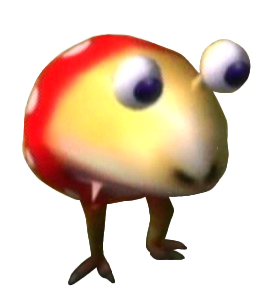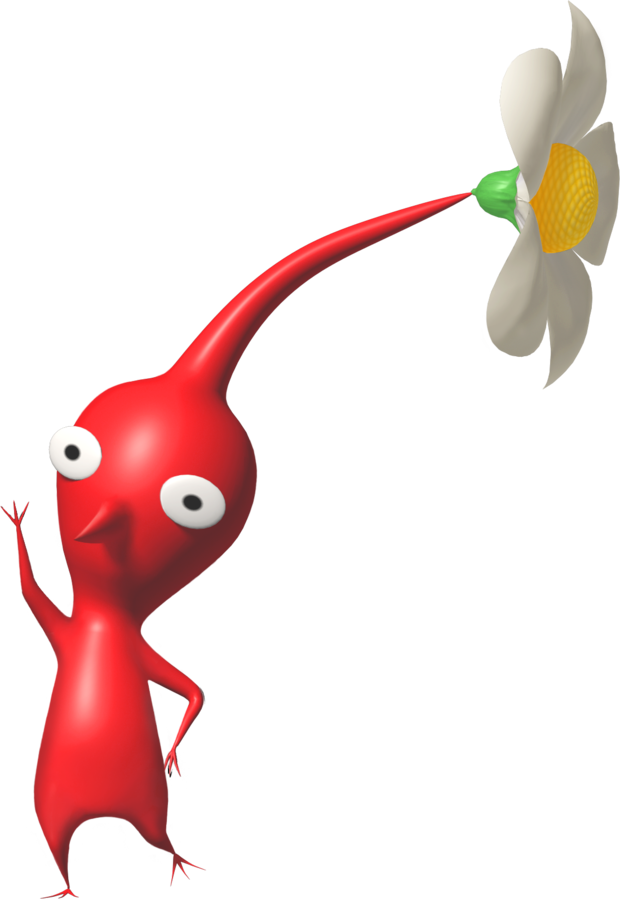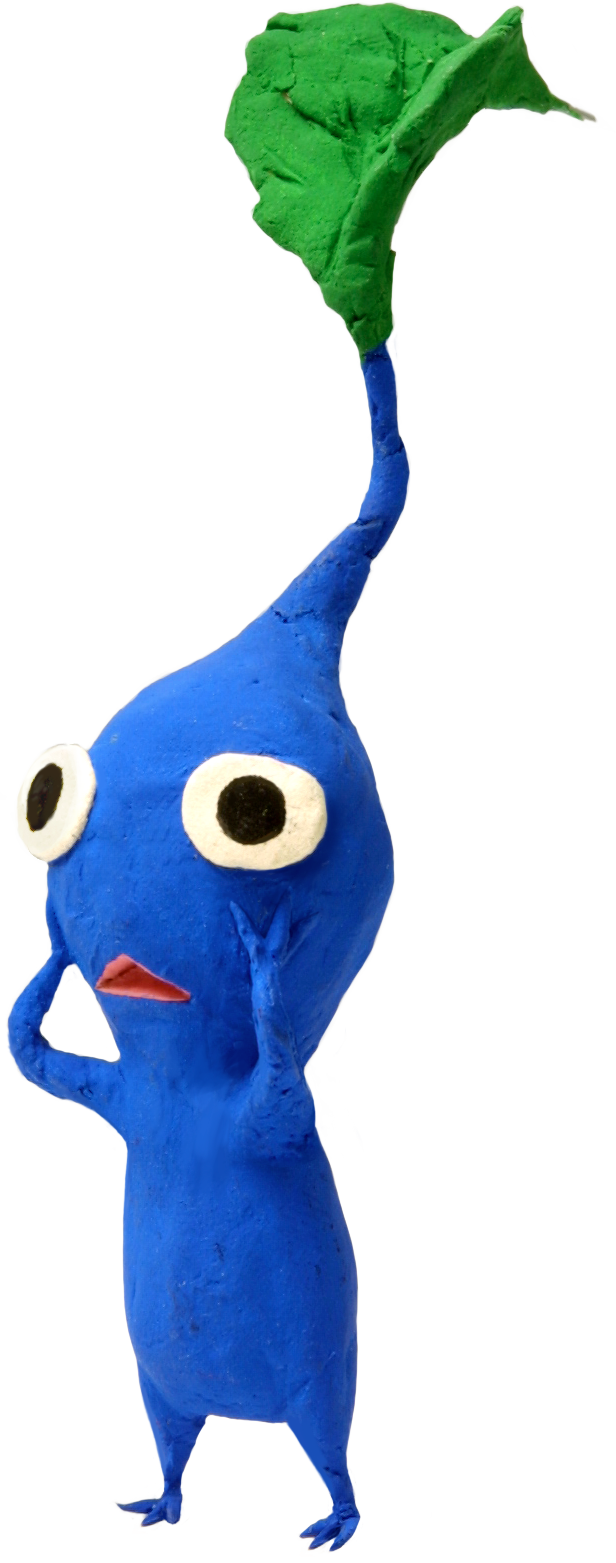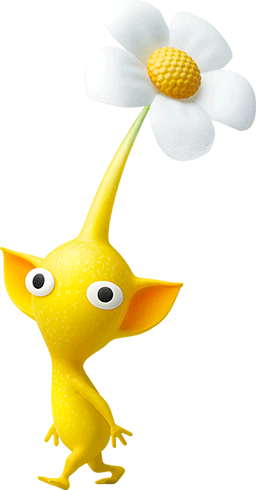Disclaimer: The content featured below is not official in any capacity, and is merely speculation on my part!
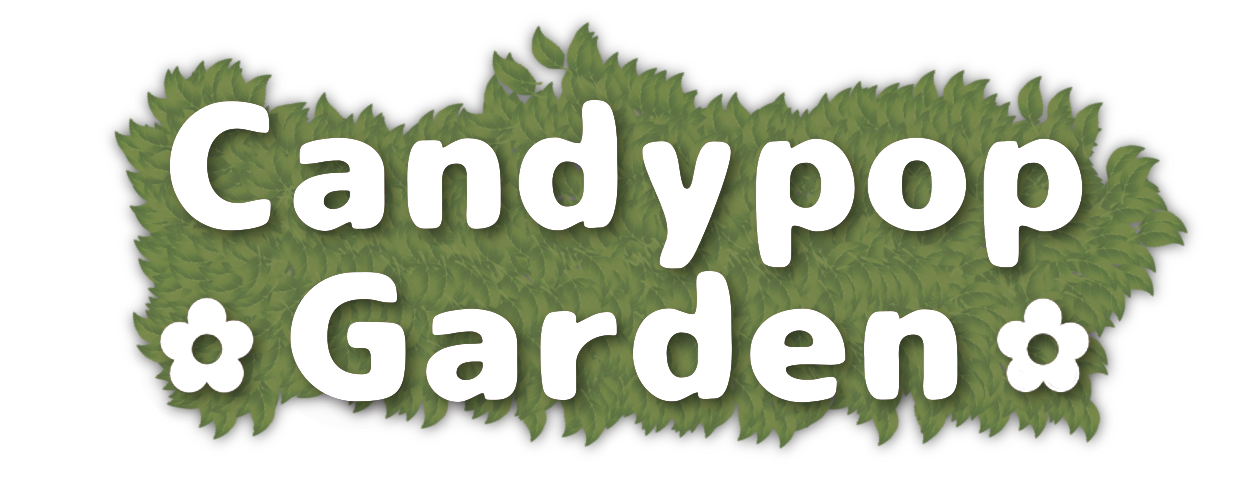

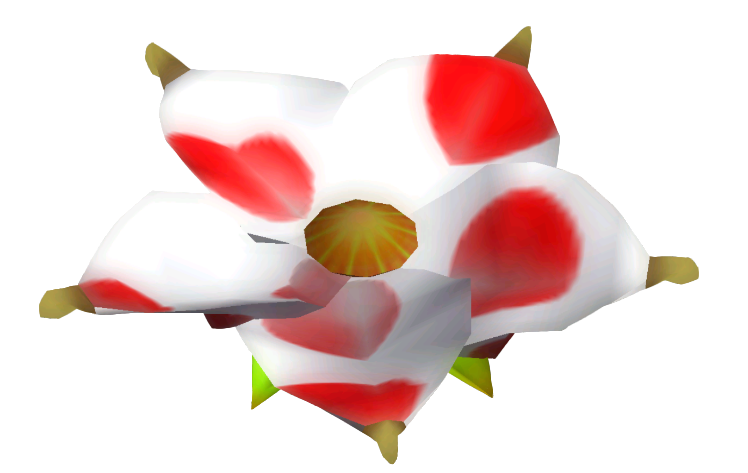
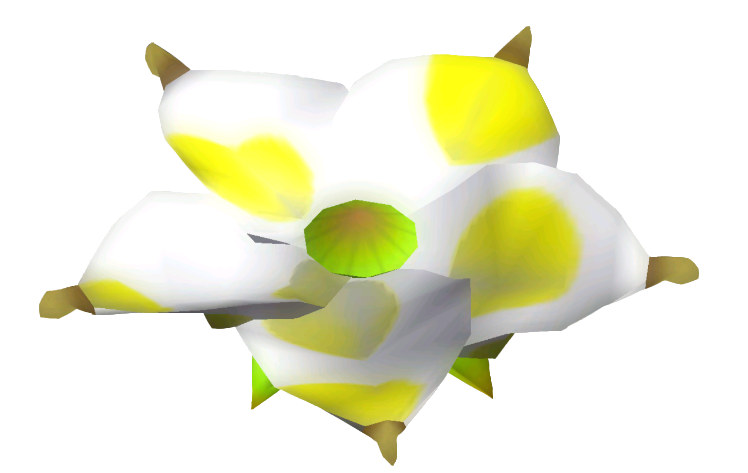


Disclaimer: The content featured below is not official in any capacity, and is merely speculation on my part!
If a Candypop Bud stays planted for long enough, and receives enough nutrients from its environment, then it can progress into its next stage of life; the Pikmin Onion. The way this transition plays out differs between Gardens, as different cultures will tend to the budding Onion in different ways. Generally, the Bud will close up in order to protect its valuable inner core, and the petals will seal to form an orblike structure.
CLAY-BASED ONIONS
Some Pikmin Gardens, particularly those that live in clay-rich areas, will often build a chassis from clay in order to protect the Onion. They form this protective shell around the Bud while it is still planted. This practise is usually quite safe for the inner Bud, but will still be overseen by Pikmin who specialise in the process to ensure that the process goes smoothly. This supervision means that less experienced Pikmin can partake while feeling more safe and confident with the guidance they recieve. Many Gardens encourage the participation of all their Pikmin, as the transition from Candypop Bud to Onion is seen as a very significant and sacred step, and a significant note in their histories.
After the clay exterior has set and been deemed suitable, the Pikmin will use paints to colour the exterior. The colour most often corresponds to the colour of the Candypop Bud prior to entering its Onion stage, in order to signify which Pikmin it can safely harbour inside. Some Gardens will also add other flourishes of colour corresponding to the Pikmin that helped build this exterior, so that it is recorded on the Onion in pride from that point forth.
While this step is taking place, the inside Candypop Bud also begins the process of dissolving itself. It does this by plugging the hole at its base with the top of its stem, then using its "digestive" fluids on itself, though the process is not as painful as this description makes it sound. By doing this, the budding Onion can convert all of its biological resources to converting matter, not just its center. And because it now has external protection, there is no need for it to keep its petals to protect itself.
Finally, once this paint has dried, the Pikmin will begin a written record of the Onion's history, tradtionally recording the time and location that it was "born." This concise archive will be built upon more over the Onion, forming rings around its hull. Although not 100% reliable, the number of archival rings an Onion exhibits is indicitave of how long the Onion has lived. Recordings are most commonly made to commemerate the union or splitting of multiple Gardens, days of celebration like after bountiful kills, days of mourning like Garden deaths or massacres, as a way to honor Pikmin who have gained a high status among their community, or even simply to mark how long an Onion has been functioning for. Of course, like everything else culture and tradition, what is actually recorded differs between the Gardens as well as based on the Onion's wishes.
Due to the fact that the liquid insides seep into and fuse with the clay exterior over time, these Onions are not capable of joining together. Instead, when multiple Gardens join together, the Onions will simply travel together.
GLASS-BASED ONIONS
Glass-based Onions are a more dramatic Onion design that is most commonly seen in areas with a lot of sand, including deserts and beaches, as well as sources of intense heat. Like the Clay Onion, the process begins with the Candypop Onion planted in the ground. However, instead of immediately building the hull around the Candypop, more care has to be taken to ensure the Candypop is not hurt or damaged by the high amount of heat and molten glass that is integral to the process. Additionally, all glass smelting has to be undertaken by Red-Pikmin, because the molten glass is too hot for any other Pikmin to handle and would be fatal. Other Pikmin types who follow the glass-onion tradition will seek out these Red Pikmin gardens as they are unable to create them themselves. So, a bowl-like stucture is constructed beforehand, by creating a divet in the sand and using the available heat source to smelt it into glass. Once this has cooled, the Candypop Bud is very carefully dug up and placed into the bowl. This is undertaken by Pikmin specialists, due to how extremely delicate the process is. Once the Candypop Bud is in this bowl, it can begin dissolving itself into its liquid form, and the Pikmin will begin creating the actual Onion exterior.
The Pikmin create the Glass Onion hull using the same technique as the initial glass bowl, but due to the advanced shape and structure, must be done by only the most experienced Pikmin. This glass building skill is a tradition in a number of Gardens containing Red Pikmin, and it isn't uncommon from Red Pikmin from other Gardens to visit or even intergrate into these groups in order to take part in these teachings.
The Hull is shaped into the distinctive Bulb shape, with a four holes left at the bottom, three small holes for what will become the Onion's legs and one large hole in the middle. Once the shape cools and sets, this hole is then used to pour the Candypop Bud from the glass bowl into the Onion hull. It is left for some time, so that the liquid Onion form can set where this gap is present, preventing it from pouring out when it is flipped, but capable of being controlled by the Onion once it is right-side up so that it can digest enemies and home Pikmin.
Then, the bottom and top metal parts of the Onion are constructed. This is also undertaken by Red Pikmin, often with communication between Yellow Pikmin who can overseer the more technical aspects, such as the technology needed to create the spinning flower on top.
Finally, all these pieces are welded together, and the Onion is flipped right-side up. Part of its liquid form will have morphed into the plant-like legs that extend from the Onion's underside, and it will now be able to support itself, transform corpses into Pikmin, house the Pikmin in its interior, and pilot its flower blades to ascend into the sky.
In order for two of these glass-based Onions to merge, the Pikmin must build a new, larger hull, and then have all the participating Onions pour their liquid form into the new body. This results in the distinct swirling colour effect that these Onions are known for.
The Pikmin commonly record their history on the exteriors of these Onions as well. The glass is melted into the symbols of their written language. Due to the less intensive process used for this, Pikmin of all types can do this on their own, using flammable substances that do not come in contact with their bodies and not exposing themselves for extended periods of time. Due to the potential danger, though, this too is overseen by Pikmin skilled in this practice.
FRUIT-BASED ONIONS
In some places, where Pikmin in all stages of their life-cycle are safe, Candypop Buds can remain planted for extremely long periods of time, and grow into Onion Trees. Then, once these Onion Trees bloom, their flowers can grow into Onionfruit. These Onionfruit have thickened skins and liquid insides, like Onions of other types, without needing Pikmin to craft them outside bodies. The presence of an Onion Tree also means that many Onions can be grown quite quickly, much more quickly than Onions that come directly from Candypop Buds. An Onionfruit is capable of housing multiple types of Pikmin if it absorbs another Onionfruit of a different type. When this happens, they are both able to compartmentalise themselves into two seperate sections piloting the one "body."
FLARLIC
Flarlics can simply be described as "underdeveloped" Onions. Candypop Buds can seal early if they so choose, entering the Onion preparation stage before it's even developed enough to convert other Pikmin. At this point, it can either grow into an Onion properly over time, or be dug up by Pikmin and taken to a fully-formed Onion to be absorbed and intergrated, depending on what the Bud communicates its wishes to be.
DRAG US!

